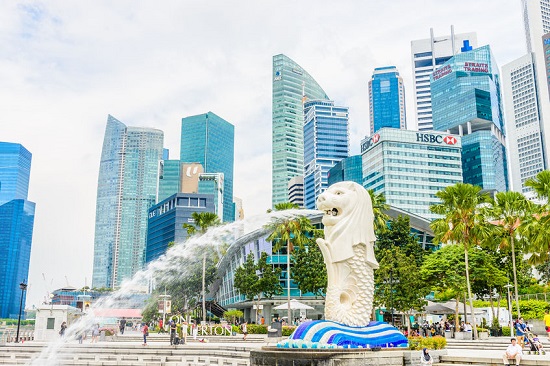Singaporean SMEs Part 3: The view up there
By Benjamin Cher December 9, 2015
- Mixed views on effectiveness of government policies, differing agendas
- Being tech-savvy is not a true barometer of digital transformation

SMALL and medium enterprises (SMEs) are the bedrock of the Singapore economy, but as with businesses of any size, they are facing challenges in today’s increasingly digital and globalised world.
The Singapore Government recognises this, and has put forth programmes and policies to encourage SMEs to increase their productivity and competitiveness, as well as expand their markets, by adopting technology.
But how successful have these efforts been? To find out, Digital News Asia (DNA) reached out to various research and consultancy firms, but discovered that there is a dearth of coverage of, and insight on, this issue.
Few companies had any research in this area and could respond to the questions DNA posed.
But in this, the final article of a three-part series on Singaporean SMEs and digital transformation, we did manage to find an analyst and an academic who had some information and insights to share.
READ ALSO: The rapid rise of the chief digital officer
Gauging effectiveness
There are currently no studies that evaluate the impact of the Singapore Government’s various SME policies, according to IDC Asia/Pacific Government Insights programme manager Gerald Wang.
“With regards to what has worked and what hasn’t, there has been no direct study done … as yet,” he tells DNA via email.
In Wang’s report on the Singapore Government’s support for SMEs going global, he mentioned that government officials were unwilling to provide assessments of programmes, citing reasons of “transnational competitiveness.”
Digital transformation across the various sectors also varies in maturity levels, but the actual level of transformation has yet to be accurately gauged, he argues.
Still, Wang believes that the Singapore Government certainly has an idea of what the future workforce would look like, pointing out that the Centre for Strategic Futures (CSF) has put out a document gauging the trends affecting the workforce, along with recommendations on adapting to such changes.
 Dr Adrian Yeow (pic), senior lecturer at SIM University, points to the cases of fraud around the Productivity and Innovation Credit (PIC) scheme as a sign that government policies are not going as planned.
Dr Adrian Yeow (pic), senior lecturer at SIM University, points to the cases of fraud around the Productivity and Innovation Credit (PIC) scheme as a sign that government policies are not going as planned.
“While I can’t directly comment on the success and effectiveness of government policies on SMEs’ adoption of digital technologies, I suspect from the many cases of PIC grant fraud that have been reported in the press, that one might get a sense that not all policies have been as successful or working the way the Government wants,” he tells DNA via email.
And while government agencies see the issue of digital transformation as a technological or adoption problem, Yeow disagrees, believing that a “reframing” of such initiatives would lead to a better outcome.
“Decisions concerning technology adoption are never made in isolation from other aspects of a business,” he notes.
“As such, for government initiatives to be improved, it may be useful to reframe them more from the perspective of business process management,” he adds.
Yeow also believes that Spring Singapore’s Capability Development Grant (CDG) may be the better way forward in encouraging SMEs to adopt digital processes.
Spring Singapore, or the Standards Productivity and Innovation Board, is a government agency charged with helping Singapore enterprises grow.
“The CDG is a better way forward as it covers a broader range of process improvements – more importantly, it is framed as a way for businesses to grow,” Yeow says.
“By providing a holistic scheme that caters to the aspirations of the SMEs, grants like CDG may be an easier approach to encourage SMEs to rethink their current processes,” he adds.
Framing a grant through that perspective also allows the Government to pitch technological improvements in concrete ways, according to Yeow.
“For example, the adoption of a new business strategy, like empowering an SME’s sales team with up-to-date sales inventory and sales product information, could be used to promote the use of cloud-based storage and online-enabled inventory systems management.
“I believe that the best way forward is ongoing SME education, workshops, as well as broad-based support by government agencies,” he says, adding that this would allow SMEs to be in a better position to tap into available government resources.
Grants, grants, grants

There certainly is quite a number of grants available to Singaporean SMEs – up to five different government agencies focused on different areas are offering such grants.
This abundance of grants might not be a bad thing, but these grants often come with terms and conditions that run contrary to the SME mindset, according to IDC’s Wang (pic above).
“Grants offer SMEs the opportunity to tap into financial as well as technical resources to digitally transform their traditional processes and services.
“Most grants however, come with ‘caveats’ that may run contrary to the very basic principles of entrepreneurship of some SMEs,” he says.
SIM University’s Yeow believes the overall grant approach needs to be streamlined.
“There is a need to streamline the number of grants, programmes, and initiatives … This would reduce the confusion among the target SME audience and also better serve their needs, rather than to serve the individual agendas and needs of the government agencies,” he adds.
While grants will continue to be a reality of life, Yeow believes that the current approach needs to be tweaked from an agency-specific approach to a “whole-of-government” approach.
“I do understand that government agencies need to retain control over the grants that they disburse as they are held accountable.
“But this has resulted in a huge number of grants, some of which may actually overlap each other,” he says.
“However, with the whole-of-government approach, it may be useful to rethink how fund control and disbursement may be handled by a central agency whose main job would be to look at the overall objectives for the SME sector,” he adds.
Yeow believes that the CDG approach may be a step in the right direction. “But given that there are huge institutional barriers to such drastic changes, I wonder if this may take more effort from the top to enact such a move,” he says.
Meanwhile IDC’s Wang argues that due to Singapore’s lack of natural resources and the diminishing value of its “strategic location” – as the centre of East-West trading and shipping – the application of financial resources to help SMEs remain competitive is key to the nation’s survival.
“This is not to say that ‘grants’ are ‘a bad thing.’ Singapore has been called many names – a ‘nanny state’ for instance – because it provides numerous grants, as well as a somewhat conducive landscape for business,” he says.
“Hence, many people may call it a ‘grantrepreneur city’ as it is, but it’s what we have to have to stay relevant and globally competitive, and Singapore shouldn’t be ‘shy’ about it,” he adds.
However, Wang also argues that not all SMEs would require a digital transformation in order to be more efficient.
“We need to understand the ‘readiness’ factor – some SMEs may run more efficient processes without the assimilation of technologies, while others run with the mindset of ‘if it isn't broken, don't fix it.’
“While it’s true that some may benefit from ICT … just how realistic is the need for such technological adoption?” he adds.
Wang does however see the need for some industries to adopt a more agile business model through ICT, to compete with their ICT-enabled competitors.
Digital natives not always a good thing

As mentioned in Part 1 of this series, the growing number of next-generation SME owners being more tech-savvy is a natural boost to digital transformation.
“The fact that SME owners are getting more tech-savvy means that SMEs would be more ready to consider adopting technology as part of their work processes,” Yeow concurs.
“However, SME owners are still profit-driven … it is about technology making business sense/ cents for the owners themselves,” he quips.
And IDC’s Wang argues out that merely being tech-savvy does not always translate to SMEs jumping on the digital bandwagon.
“Being tech-savvy and understanding how corporate/ enterprise technologies work are two separate perspectives,” he says.
Instead, digital natives being familiar with consumer technology means a greater need for personal technologies being able to access corporate information or resources; mobility and wireless solutions; intuitive technologies to engage audiences; and cloud storage and third-party plug-and-play applications or X-as-a-Service models, according to Wang.
“This does not mean they understand the entire networking of a proper enterprise solution/ system,” he says.
“Enterprise CIO-related management issues – or what some people may call ‘bureaucracy/ process-based restrictions’ – such as information governance and system ownership, funding sources, maintenance and project management expertise, data centre management, cybersecurity solutions, ICT sourcing methods, etc. will be absent or at least at a lesser degree in these SMEs,” he adds.
IDC expects that SMEs will see a greater pervasiveness of consumer technologies that support business needs.
According to Wang, this is critical with 180,000 SMEs making up about 99% of all enterprises in Singapore, contributing to about half of its GDP (gross domestic product), and hiring about 70% of the workforce, citing Spring Singapore statistics.
But he also cautions against using technology as a panacea, pointing out that ICT is just an enabler of productivity.
“They are tools to be leveraged, and if users are savvier in assimilating the technology, it is expected that their productivity would invariably increase,” Wang says.
“However, this is just a one-dimensional take on productivity – there are many other socioeconomic factors such as business processes and worker cultural attitudes that determine the ultimate productivity of leveraging ICT,” he adds.
Initiatives and models

Still, Singapore’s ‘show-and-tell’ model of piloting solutions with SMEs has paid off to some extent, according to Wang.
“When you look at it from a competitive landscape perspective, if you want to survive, and if your goods or services are perfect substitutes with those of your competitor, and your competitor has gained notable success and/ or expansions by adopting ICT, what would your reaction be?
“I’m fairly sure the answer is obvious, that such SMEs would equally adopt ICT to improve their current operations,” he says, adding that this also helps these companies in going global.
The Smart Nation initiative has also helped boost the relevance of technology, according to Wang.
“There is a lot of maturity and sustained growth momentum in the ICT market that can help SMEs stay relevant and grow further if they want to,” he says.
“Whether it is in improving internal business processes and gaining better customer insights, or whether it is in engaging with key business stakeholders and customers, the maturity of Singapore’s ICT landscape is at a point where there are numerous options, grants, and opportunities for growth if the ‘readiness’ factor is addressed,” he adds.
And despite the lack of studies on the effectiveness of government policies, they have helped Singapore maintain its ranking of first in the ease of doing business for 2015 and 2016 according to the World Bank.
This is a testament to Singapore’s efforts in helping businesses, according to Wang.
“The Singapore Government is known globally for its streamlined services, from registering a business to getting the various permits and licences, as well as its tax and rebates,” he says.
“There’s a lot more to be done of course – however, IDC believes that there is sufficient information from the Singapore Government to point SMEs to the various agency financing and e-services options for their varying needs,” he adds.
Singaporean SMEs and digital transformation:
Part 1: The government’s guiding hand
Part 2: On the ground
Related Stories:
Singapore emerges top sustainable city in South-East Asia
Consumer tech driving workplace transformation: Citrix CEO
For more technology news and the latest updates, follow us on Twitter, LinkedIn or Like us on Facebook.


